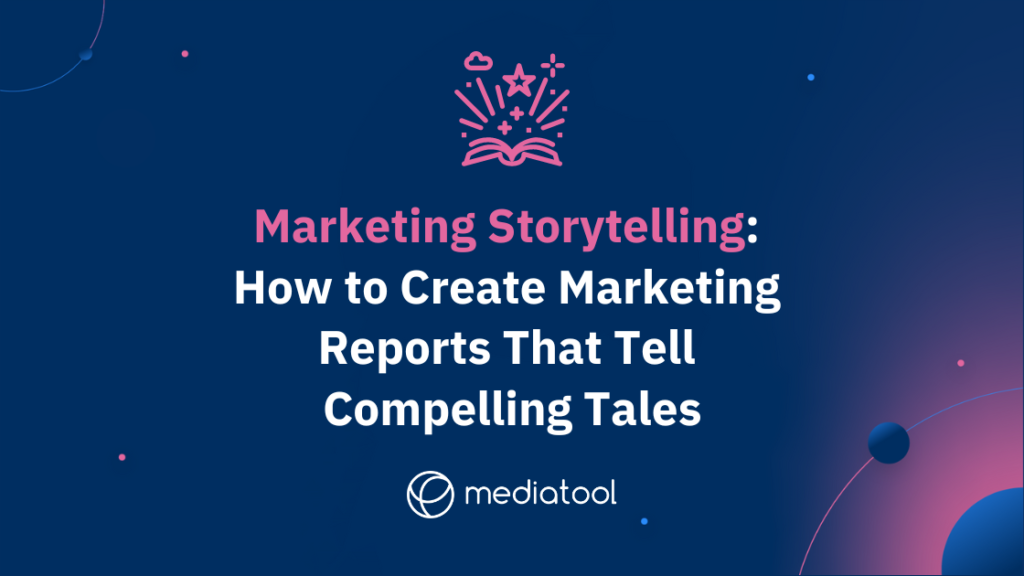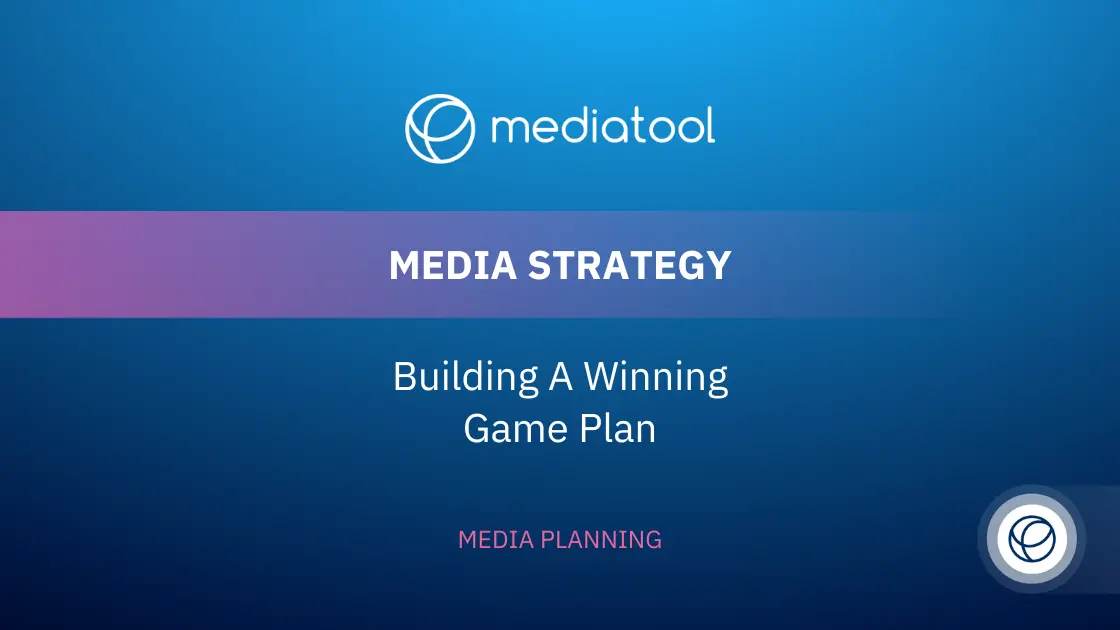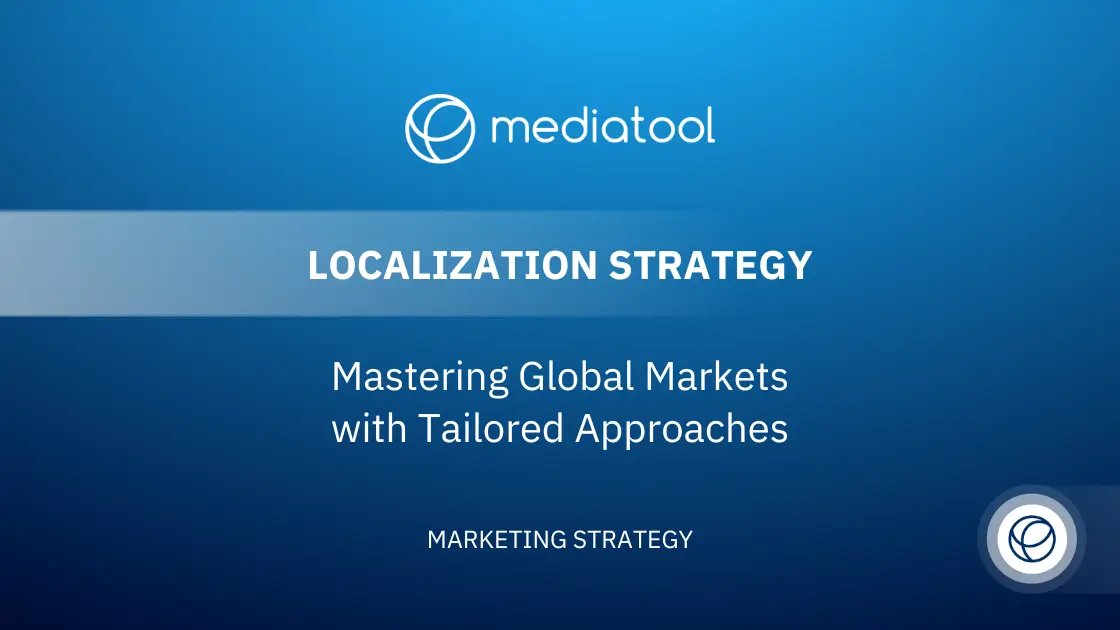Once upon a time, a frustrated Marketing Manager spent 10-20 hours every month creating reports.
The Big Bad Boss huffed and puffed over Slack, demanding: “where is my monthly marketing report?”
“Here it is,” the Marketer replied, sending a 30-page PDF with lots of big numbers that, if we’re honest, didn’t mean much to anybody. It’s not even clear if the Marketing Manager understood them.
If this story sounds more like reality than fantasy, it’s probably a sign you need to rethink reporting.
Marketing reports should tell a compelling story. Just not the kind you might be familiar with.
Defining marketing storytelling in campaign reporting
They say storytelling is an art, but we’re inclined to disagree. When it comes to marketing reports, storytelling is 50% technique and 50% data-driven insights. Marketing reports that tell compelling stories are pivotal in demonstrating ROI.
These reports craft stories that not only showcase marketing outcomes but also align them with business goals, speaking the language of senior managers. This alignment underscores the impact of successful marketing campaigns on overall business growth.
Marketing storytelling practices highlight the brand’s personality and its hero’s journey, making complex data relatable and transforming them into success stories and compelling tales.
The storytelling marketing examples in these reports serve as a guide for the marketing team, illustrating how to engage customers, address their pain points, and lead them through the buyer’s journey with a clear call to action.
The ultimate goal is to foster deeper engagement and lasting customer relationships through these engaging stories, thereby illustrating the power of storytelling in the marketing strategy.
Is brand storytelling the same as marketing storytelling?
Brand Storytelling: Emotional Engagement with Audiences
Brand storytelling is a creative process that uses emotional and narrative elements to engage audiences. It involves crafting a brand’s story, which embodies its personality, values, and mission, to create a deep emotional connection with its target audience.
This narrative approach often uses personal stories, real-life experiences, and the brand’s hero’s journey to resonate with listeners and build brand loyalty.
Marketing Storytelling: Aligning Campaigns with Business Goals
In contrast, storytelling in marketing, specifically within marketing reports, focuses on strategically aligning campaign KPIs with overarching business goals.
This technique utilizes storytelling skills to turn complex data into compelling tales.
Marketing storytelling in reports is about illustrating ROI through engaging data visualizations and clear narratives that link marketing strategy to tangible results.
Crafting Compelling Marketing Stories
The process of storytelling in marketing reports involves creating content that is not just informative but also engaging. It uses storytelling marketing examples to demonstrate successful campaigns and how they address pain points, engage customers, and drive action.
This approach ensures that marketing messages are not just good stories but also compelling tales that stick in the reader’s mind, leading to deeper engagement.
Integrating Brand and Marketing Storytelling
While brand storytelling focuses on the emotional aspects and brand personality, marketing storytelling in reports concentrates on the effectiveness and outcomes of marketing strategies.
The integration of these elements in reports creates a complete narrative that resonates on all channels, showcases the brand’s strategy, and highlights the success stories of marketing campaigns.
By integrating elements of brand storytelling and targeting the right audience, these reports create an engaging story that resonates with internal stakeholders. They exemplify storytelling in marketing by linking brand values and marketing strategy through narrative.
This approach helps in building brand loyalty and reinforcing the brand’s mission.
Whether through written stories, audio stories, or content marketing on social media channels, the storytelling process involves crafting tales that are not just good stories but are also relatable and create an emotional connection with the audience.
How brands and agencies can create compelling marketing reports
In-house teams use results to justify next year’s budget. Agencies point to reports to demonstrate their value to the client.
Whether you work in-house or agency-side, the need to tell compelling and consistent stories in campaign reports is ever-present. Here’s how it’s done.
10 tips for compelling marketing reports:
1. Link Results to Customer Value:
Showcase how your marketing strategy enhances customer value. Use storytelling in marketing to transform complex data into relatable stories that resonate with the target audience.
For example, if your strategy led to increased customer satisfaction or retention, highlight these outcomes with real customer testimonials or case studies that showcase the value added to their experience.
2. Consistency in Brand Storytelling:
Maintain a consistent narrative throughout your report, reflecting your brand’s personality and mission. This consistency in brand storytelling builds trust and brand loyalty.
Ensure that every piece of content, from market analysis to outcome summaries, aligns with your brand’s tone, style, and core messages.
3. Concise and Compelling Stories:
Be concise in your reporting. Craft stories that are straightforward yet compelling, ensuring they are easy to understand and engaging.
Avoid overloading your audience with unnecessary details. Focus on key points that drive your narrative and keep the reader interested and invested in your story.
4. Honesty in Storytelling:
Ensure your marketing messages are honest and transparent. Authenticity in storytelling fosters deeper engagement and strengthens customer relationships.
Acknowledge challenges and setbacks as well as successes, as this honesty can create a more relatable and trustworthy brand image.
5. Utilize Visual Storytelling:
Incorporate visuals to aid in storytelling. Visuals can help convey your message more effectively and make complex information more accessible.
Use charts, graphs, and infographics to illustrate trends and data points, and include images or videos that add a human element to your stories.
6. Avoid Jargon, Embrace Clarity:
Use clear, jargon-free language. A good story is one that’s easily understood by all members of your target audience.
Simplify complex concepts and avoid industry-specific language that might alienate non-expert readers.
7. Omit Vanity Metrics, Focus on Real Impact:
Exclude metrics that don’t add value to your story. Focus on metrics that demonstrate the real impact of your marketing strategy.
Prioritize data that speaks to business growth, customer engagement, and other tangible results over superficial metrics like page views or likes.
8. Understand Your Client’s Journey:
Know your client’s needs and tailor your report to reflect their journey. Use storytelling marketing techniques to address their pain points and goals.
Dive into how your strategies have positively affected different stages of the customer journey, from awareness to purchase and beyond.
9. Highlight Outcomes and Success Stories:
Emphasize the outcomes and successes of your marketing campaigns. Share success stories that illustrate the effectiveness of your strategies.
Use case studies and real-life examples to bring these successes to life, demonstrating the practical impact of your work.
10. Contextualize Results within the Larger Brand Strategy:
Place your results within the context of the broader brand strategy. This helps in creating a compelling story that aligns with your brand values and overall marketing objectives. Explain how each result contributes to the bigger picture of brand growth, market positioning, and long-term objectives.
Incorporating these elements into your marketing reports can transform them from mere data compilations into engaging, informative narratives that effectively communicate the success and impact of your marketing efforts.
Start with strategy
The art of storytelling in marketing unfolds well before the stage of reporting. As you embark on campaign planning, it’s essential to envision the overarching narrative that aligns with your marketing strategy. This narrative should intertwine with your brand’s story, reflecting its values and personality.
Start by drawing insights from your business goals and organizational targets, transforming them into measurable marketing KPIs.
For instance, if your marketing KPI is to generate 10 Marketing Qualified Leads (MQLs) this month, this should support the broader organizational target of increasing qualified leads by 100% over the year, ultimately contributing to the business goal of expanding the client base with high-value accounts.
In this process, crafting compelling stories around these objectives is crucial. They should be more than just good stories; they need to be compelling tales that embody your brand’s mission and echo through all your marketing messages.
A clear, customer-focused strategy becomes your guiding light, your “north star,” throughout this journey.
It should influence every phase, from planning and crafting engaging stories to measuring success and optimizing strategies.
Your marketing team should use storytelling skills to create content that resonates on all social media channels, ensuring that these stories are not only heard but also felt by the audience, addressing their pain points and inspiring action.
The storytelling process in marketing isn’t just about telling a great story; it’s about creating an emotional connection, a narrative that sticks in the listener’s mind and encourages them to embark on their own hero’s journey with your brand.
By integrating storytelling into your marketing strategy, you turn data into relatable experiences, driving deeper engagement and paving the way for the most successful marketing campaigns.
Create alignment between marketing and customer value
In marketing, especially when it comes to reporting, the focus should always revolve around customer value. Defining customer value varies based on business goals, which might include:
- Increasing average spending.
- Enhancing the lead funnel.
- Securing key accounts.
- Boosting customer lifetime value.
Your marketing report should ensure that every metric presented connects directly to customer value, effectively demonstrating the ROI of your marketing efforts.
This approach is essential in telling a compelling story about the success of your marketing strategy.
For instance, a Forrester survey involving over 300 senior B2B marketers revealed that 20% are prioritizing attracting new buyers, while 19% are focusing on penetrating new markets this year.
These insights reflect how marketers align their strategies with the ‘north star’ of their organizations, setting benchmarks that resonate with their brand’s story and mission.
Your marketing storytelling should weave these elements into a narrative that engages your target audience. It’s about crafting stories that not only illustrate the success of your marketing campaigns but also resonate with the brand values and create an emotional connection with the audience.
These stories, whether shared through written content, audio stories, or across social media channels, should reflect the brand’s personality and its journey, addressing the pain points of the audience and inspiring action.
So, ask yourself: How does your marketing strategy align with these principles?
Are you using storytelling skills to create engaging stories that showcase your brand’s journey and achievements?
Successful marketing campaigns are those that can turn complex data into relatable, engaging narratives, fostering brand loyalty and deeper customer relationships through effective storytelling in marketing.
Focus on results, not activities
Shifting Priorities in Marketing Decision-Making
As the marketing landscape increasingly shifts towards a customer-centric approach, the focus is more on outcomes than mere activities.
Reflecting on the same Forrester report, we see that:
- 37% of marketing decision-makers and CMOs are now prioritizing adapting to changing buyer behaviors
- while 31% concentrate on crafting audience-centric content throughout the customer lifecycle.
This trend highlights the essence of storytelling in marketing. Marketers are encouraged to weave compelling stories that resonate with their target audience, going beyond just reporting activities. As you prepare your marketing report, it’s vital to shift from simply listing activities to showcasing results. Transform measures of activity into metrics that narrate the success stories of your marketing strategy.
Data as the Voice of Marketing Results
Remember, it’s the results that truly justify the investment of time and budget, not the list of activities. Let the data speak for itself, telling a compelling story of how your marketing efforts have translated into tangible outcomes. This approach is crucial for demonstrating brand loyalty, engaging customers, and solving their pain points.
The importance of data in marketing reports cannot be overstressed. It provides the foundation for storytelling in marketing, enabling you to craft stories that not only captivate but also drive action. Successful marketing campaigns are marked by their ability to turn complex data into relatable and engaging narratives.
Reflecting Brand Personality and Values
Your marketing report should reflect this, showcasing how your brand’s personality and values have been communicated through each campaign, and how these efforts have fostered deeper customer relationships and engagement across all channels.
Transforming Marketing Messages into Success Stories
The transition from focusing on activities to highlighting results is a storytelling strategy in itself. It’s about using storytelling skills to transform marketing messages into success stories, making every aspect of your marketing strategy a part of a larger, compelling narrative.
Use high-quality data
Every good story has a beginning, middle, and end. Your marketing report should have those components.
Well, kind of.
Allow us to explain.
- Beginning: Metrics collected at the start of the campaign
- Middle: Metrics collected at the end of the campaign
- (Open) end: Improvements you can make to grow the business in the future
The Beginning: Setting the Scene with Initial Metrics
Every compelling story, including those in marketing reports, has a clear beginning, middle, and end.
The beginning of your marketing story starts with the metrics collected at the campaign’s onset. This forms the foundation of your storytelling in marketing, setting the stage for the narrative to unfold.
The Middle: The Campaign’s Progression
As the story progresses, the middle of your marketing report should focus on the metrics collected towards the end of the campaign. This part of the report is crucial for showing the evolution of your marketing strategy and its impact on your target audience.
The Open End: Future Growth and Improvements
The end of your marketing report should not be conclusive but rather open-ended, pointing towards future improvements and growth opportunities. This is where you can create suspense and engagement by suggesting how the brand’s story will continue evolving.
Transforming Data into Visual Stories
The Power of Data Visualization
A great story in marketing requires more than just written words or numbers. It demands visualizations that immediately convey a compelling narrative.
This is evidenced by the fact that 84% of marketers regularly create data visualizations, with 48% doing so every week. Data visualization is a key element in storytelling in marketing, turning complex data into relatable and engaging stories.
Confidence in Data Sources
Despite the widespread use of data visualizations, less than 60% of marketers feel confident in their data sources.
Quality data is essential for adding valuable insights and recommendations to your marketing report. It’s the cornerstone of effective storytelling in marketing, ensuring that your stories are grounded in reality and resonate with the audience.
Mediatool: A Solution for End-to-End Campaign Management
Centralizing Data for Better Storytelling
To effectively tell compelling stories in marketing, brands and agencies need reliable multi-channel data.
Mediatool offers a solution as an end-to-end campaign management platform, providing access to dependable data in a centralized location.
This platform is crucial for marketing teams striving to craft successful marketing campaigns that resonate across all channels.
Simplifying Report Creation
Mediatool simplifies the storytelling process by offering powerful yet easy-to-use reporting features. These tools allow marketers to explore data, create visually appealing reports effortlessly, and export charts and graphs for integration into design documents.
The platform enhances the ability to share engaging stories, making it easier for marketers to communicate their brand’s story and connect with their audience on a deeper level.
By utilizing Mediatool, marketers can transform their approach to storytelling in marketing, ensuring that every report is not just a collection of data but a compelling narrative that showcases the brand’s journey and paves the way for future success.
Conclusion: Crafting Stories That Resonate
In the realm of marketing, the power of storytelling is undeniable. As we’ve explored, the journey from mundane data collection to creating engaging marketing reports is a transformative process, pivotal in the world of marketing storytelling.
It’s a journey that requires skill, creativity, and the right tools, like Mediatool, to weave compelling tales that captivate the target audience and illustrate the brand’s journey.
Embracing the Art of Storytelling in Marketing
Marketing storytelling isn’t just about presenting data; it’s about crafting narratives that resonate with the core message of the brand and create an emotional connection with the audience.
This process involves understanding the brand’s story, the hero’s journey, and how each campaign contributes to the larger narrative.
The goal is to engage the listener’s imagination, making them feel a part of the story.
The Role of Mediatool in Storytelling
Mediatool emerges as a master storyteller’s essential aid, offering the functionality to transform complex data into great stories.
Unlike rigid campaign reporting tools, Mediatool makes it easy to compile a compelling story.
- Filter data: Segment and sift your marketing results to get deeper audience insight
- Demonstrate customer value: Target tracking and real-time results prove marketing’s contribution at a glance
- Compile all your data: Mediatool’s Integrations bring multi-channel marketing campaigns together in a user-friendly dashboard, saving you time and improving data quality
And perhaps most importantly, Mediatool’s reporting functionality is ideal for busy brands and agile agencies.
You can customize and create an unlimited number of good-looking marketing reports. Reports only take a few clicks, so you can share them on demand or after the campaign ends. With Mediatool, you’re in control of the story. Schedule a hands-on demonstration to find out why every Mediatool tale ends with a happily ever after.
Final Thoughts
In the world of marketing, the final chapter of any campaign is often its report. As we wrap up our discussion on marketing storytelling, it’s essential to emphasize that the art of storytelling in marketing reports is not just a matter of presenting data; it’s about weaving a narrative that captures the essence of your campaign’s journey.
Crafting a Narrative in Your Reports
A marketing report should do more than just list statistics and outcomes; it should tell the story of the campaign.
From the initial challenges and objectives to the strategies employed and the results achieved, your report should guide the reader through a journey that illustrates not only what was done but also why it mattered.
Making Data Relatable and Insightful
The key to compelling storytelling in marketing reports lies in making the data relatable and insightful. Use data visualizations to paint a picture of progress and impact.
Highlight how specific strategies led to tangible results, and how these align with overall business goals and customer needs.
Connecting with Your Audience
Remember, the audience of your marketing report – whether it’s your team, stakeholders, or clients – is looking for a story they can connect with. They want to understand the impact of your marketing efforts in a way that resonates with them.
By effectively telling this story, you’re not just reporting results; you’re engaging your audience and demonstrating the value of your work.
Using Tools to Enhance Storytelling
Leverage tools like Mediatool to streamline the process of crafting these stories. Such tools can help organize data, create compelling visualizations, and provide insights that can transform a collection of numbers into a captivating narrative.
As you step forward in your marketing endeavors, keep the principles of storytelling at the forefront of your reporting strategy. With the right approach, every marketing report can be an engaging story that not only informs but also inspires.
It’s in this fusion of data and narrative that your reports can truly come to life, turning the end of a campaign into a memorable and impactful story.





